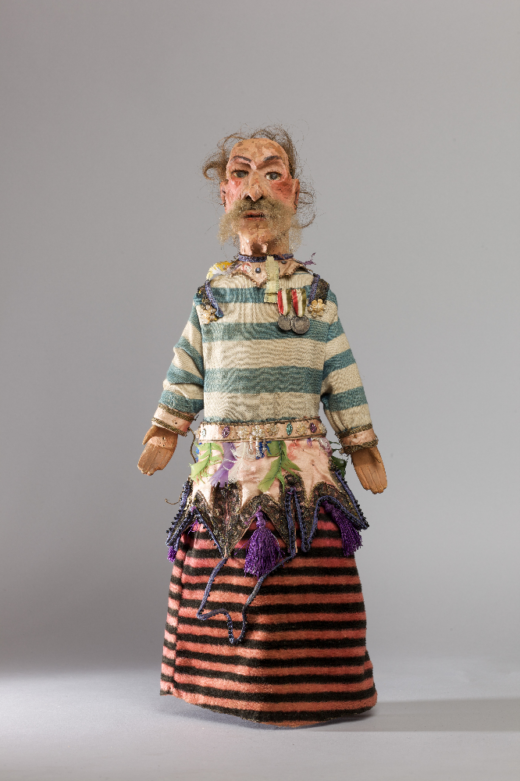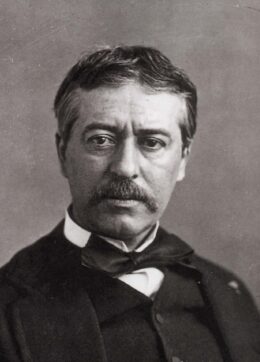
Printed
24 pages
Author(s)
Le Candidat de Trépagny
Son of author George Sand, Maurice Sand started writing puppet plays in 1847 for performances destined only for his family and some of his friends in Nohant (France). His theatre has had different names: « Théâtre de Guignole » (1847), then later in 1858 « Théâtre des amis » (Friends Theatre), then the « Théâtre de Balandard » in 1869 and then finally the « Théâtre de marionnettes de Maurice Sand » (Maurice Sand’s puppet theatre) in 1883.
The burlesque in Maurice Sand’s plays is inspired by the commedia dell’arte. Some of his characters take on an important role and are found in other plays by Sand. The character of Balandard, the company’s director and headliner of several plays, is Maurice Sand’s alter ego.
A street performer becomes a candidate in the elections
In Trépagny-les-Mèches, Piquendaire, the innkeeper, displays his support for the candidate Manandar, and despises his rival Tringlet, whom he describes as a « radical, labourer ». At the same time, the street performer Conquenbois, dressed as Hercules, gives a street performance with his assistant Eloa. After their performance, Piquendaire gets ready to welcome Manandar in his hotel, but gets confused and welcomes Balandard instead, accompanied by Ida and Céleste. Settled in the hotel, Balandard meets Coquenbois and Eloa, and invites them to dinner. Piquendaire, convinced that he is destined for a prestigious job, is in charge of bringing a candidate to an important dinner. During the reception, Balandard is invited to give a speech, but he confesses that he is not Manandar. However, the guests do not realise their mistake. Finally, Balandard introduces the « real » candidate: Coquenbois. Tringlet recognises the street performer immediately, but Coquenbois challenges him to a duel and is victorious, thus becoming the favourite in the elections.
Other titles
First performance
Chateau de Nohant (House of George Sand)
Publications and translations
Maurice Sand, Le Théâtre des marionnettes. Paris: Calmann-Lévy, 1890.
Maurice Sand, Le Théâtre des marionnette. Marseille: Jeanne Laffitte, 1999.
